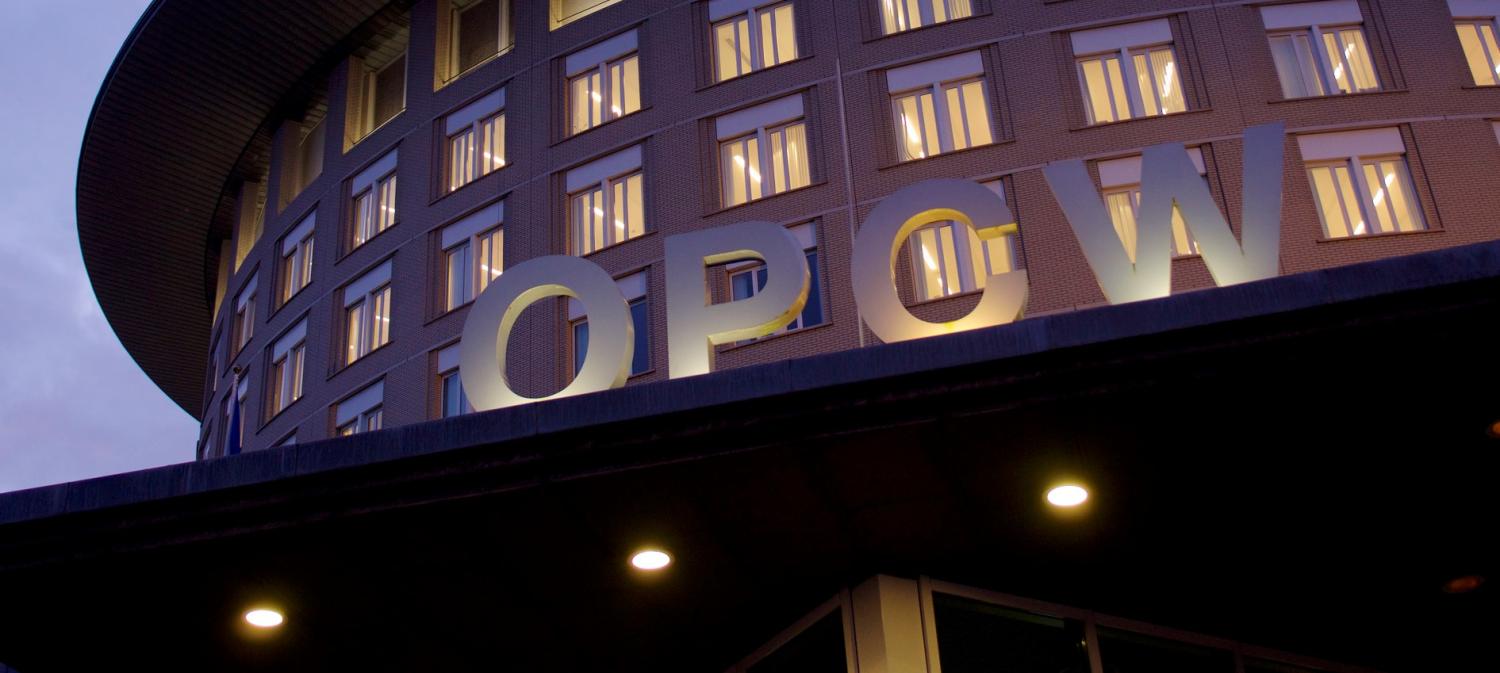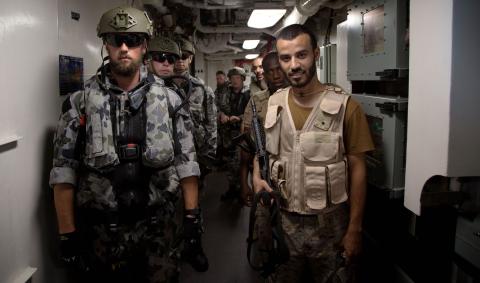The recent chemical-weapons atrocity in Syria has been rightly condemned by many countries, including Australia. The attack against the rebel-held town of Khan Sheikhoun in Idlib Province in northern Syria resulted in the deaths of dozens of people including many children, and injury to possibly several hundred others. Videos of victims strongly suggest that the chemical was a nerve agent, possibly sarin.
The use of chemical weapons against Syrian opposition groups and civilians is an ongoing saga. World attention was first drawn to their use in August 2013 when, in the outer suburbs of Damascus, possibly 1000 people or more were killed by the use of rockets carrying the nerve gas sarin. International condemnation led to the chemical disarmament of Syria under the supervision of the Office for the Prohibition of Chemical Weapons (OPCW). Syria however continued to deny any responsibility for the attacks and instead blamed rebel forces.
Following the chemical disarmament of Syria it might have been expected that any further use of chemicals in the conflict would have ceased, but within a year of the start of the elimination of Syrian stockpiles, attacks using chlorine began and have continued sporadically over the past four years. Compared to the August 2013 event, the chlorine attacks were technically unsophisticated: helicopters dropped barrel bombs containing small cylinders of chlorine which were ruptured with a small explosive charge to disperse the gas. The number of deaths from the chlorine barrel bombs was small but the attacks caused widespread panic in the targeted towns.
The Khan Sheikhoun attack, however, is significantly different and raises a number of fundamental questions.
Who's responsible?
The Russian government has blamed rebel forces. A Russian Defense Ministry spokesman claims a Syrian aircraft conducted a strike against a rebel ammunition depot and chemical weapons stored there for delivery to Iraq burst and spread toxic gas to the nearby town.
It is not clear which rebel group Russia is referring to, although the mention of chemical munitions for delivery to Iraq implies it is the terrorist group ISIS, which has made some primitive chemical weapons and has used them in Iraq and Syria. However the chemical agent made by ISIS appears to be a crude form of mustard, a relatively easy compound to manufacture. Sarin, however, which was probably used in the Khan Sheikhoun attack, is more complex and difficult to produce, particularly in military quantities. It is highly unlikely ISIS has made and weaponised sarin.
In any case, although ISIS forces are close to Khan Sheikhoun they do not control that town. And there is no evidence that the rebel forces in that area have the interest or capability to manufacture chemicals.
The finger of suspicion therefore strongly points at the Syrian military as the perpetrators of this crime.
Why is this attack different?
Although chemical attacks against the Syrian population have continued over the past four years the Khan Sheikhoun attack is significantly different. After the August 2013 sarin attacks, Syria was compelled to join the Chemical Weapons Convention, declare all its chemical weapons and disarm. Chlorine barrel bombs were used after that, but their manufacture seemed makeshift and they were clearly not part of Syria’s former military chemical arsenal. Chlorine barrel bombs are a violation of the CWC but their possession does not indicate that Syria's 2013 declaration of its chemical weapons was incorrect. Chlorine, if used for industrial reasons, is excluded.
Over the past few years CWC member states have expressed concern that Syria’s chemical declaration is inaccurate and incomplete. Indeed over the past two years the OPCW has held continuing discussions with Syria to resolve discrepancies, so far without success. Although the nature of these discussions is confidential, statements made by various delegates to the OPCW suggest that although the majority of Syria’s chemical holdings were disclosed, details are missing on a broad range of issues, including on munitions and manufacture.
The Khan Sheikhoun attack now appears to be demonstrable proof that Syria's CWC declaration, the basis for its chemical disarmament, is inaccurate. At the very least, Syria has retained undeclared stocks of a nerve agent, possibly sarin in binary form, and the munitions to deliver it. What other chemical weapons may be undeclared can only be speculated on, but given the recent event it is reasonable to assume that some exist.
Where to now?
A Joint Investigative Mechanism (JIM) employing experts from the UN and OPCW was established by the UN Security Council a couple of years ago to determine who was responsible for chemical attacks in Syria following the August 2013 event; the Council emphasised its determination that those responsible would be held accountable.
The JIM has since reported to the Council that Syria was the perpetrator of two chlorine attacks and ISIS of one mustard attack; other alleged attacks are still under investigation. In spite of this finding, very little action has been taken against those responsible. Russia and eight other nations have simply dismissed the JIM as political.
There have now been a number of calls, including by Australia, for a full investigation in to the Khan Sheikhoun attack. However, the recent JIM experience does not auger well for this process, nor for a solution through the UN.
The Trump Administration has today taken its own action, launching a cruise missile strike against a Syrian airfield 'to prevent and deter the spread and use of deadly chemical weapons'. However, it seems unlikely that such action will have any profound or long lasting effect on the Assad regime. Indeed it is difficult to envisage what measures, political or military, the US could realistically take to bring Syria to account. In all probability, the abhorrent Khan Sheikhoun chemical attack is likely to be lost in the wider Syrian crisis, with its almost 5 million external refugees, its growing internal humanitarian needs and its political complexity.
As depressing and alarming as it is, the world may therefore expect that Syria will continue to use its remaining chemical weapons against its populace, whenever it chooses and with relative impunity.

